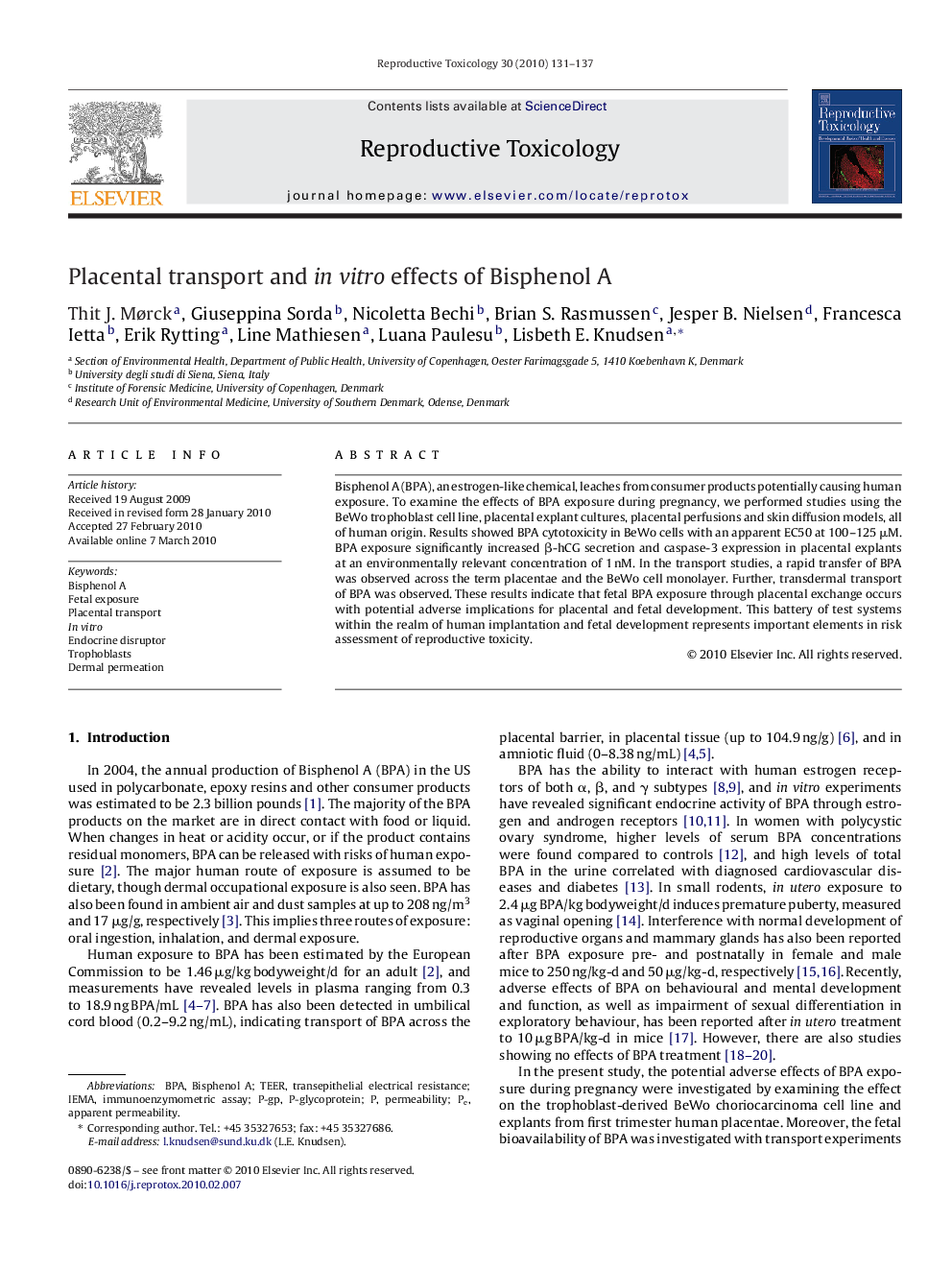| Article ID | Journal | Published Year | Pages | File Type |
|---|---|---|---|---|
| 2594323 | Reproductive Toxicology | 2010 | 7 Pages |
Bisphenol A (BPA), an estrogen-like chemical, leaches from consumer products potentially causing human exposure. To examine the effects of BPA exposure during pregnancy, we performed studies using the BeWo trophoblast cell line, placental explant cultures, placental perfusions and skin diffusion models, all of human origin. Results showed BPA cytotoxicity in BeWo cells with an apparent EC50 at 100–125 μM. BPA exposure significantly increased β-hCG secretion and caspase-3 expression in placental explants at an environmentally relevant concentration of 1 nM. In the transport studies, a rapid transfer of BPA was observed across the term placentae and the BeWo cell monolayer. Further, transdermal transport of BPA was observed. These results indicate that fetal BPA exposure through placental exchange occurs with potential adverse implications for placental and fetal development. This battery of test systems within the realm of human implantation and fetal development represents important elements in risk assessment of reproductive toxicity.
